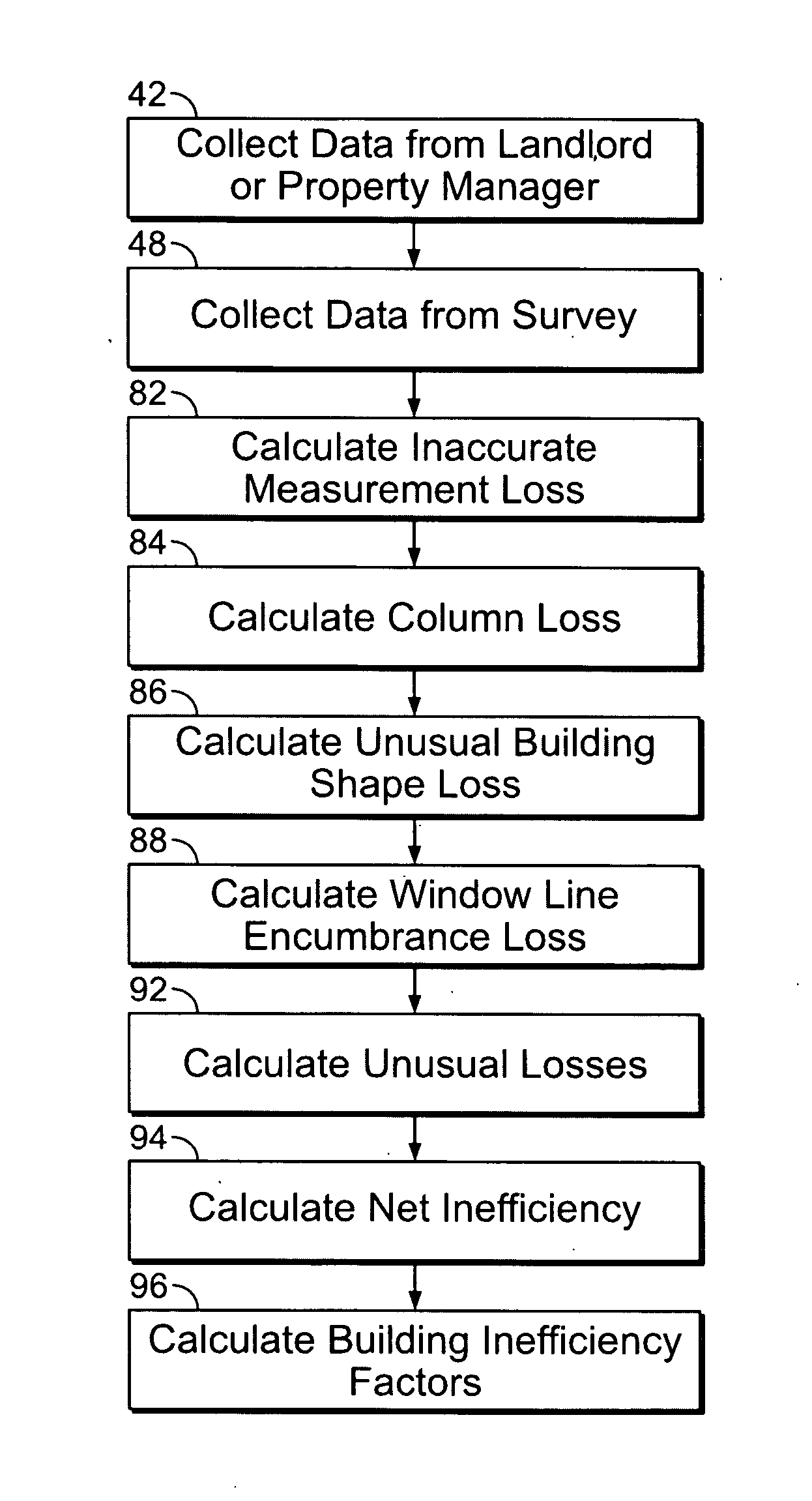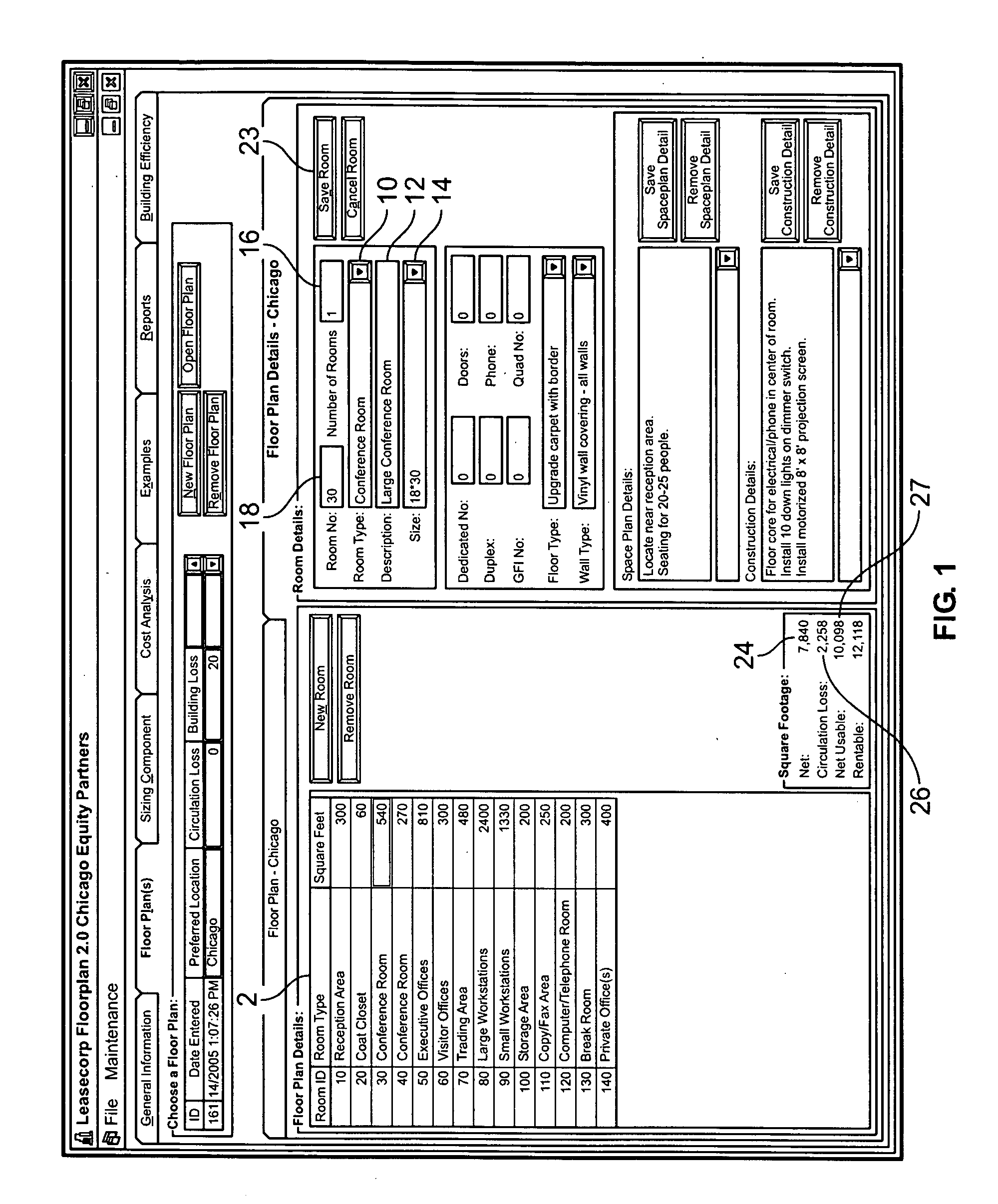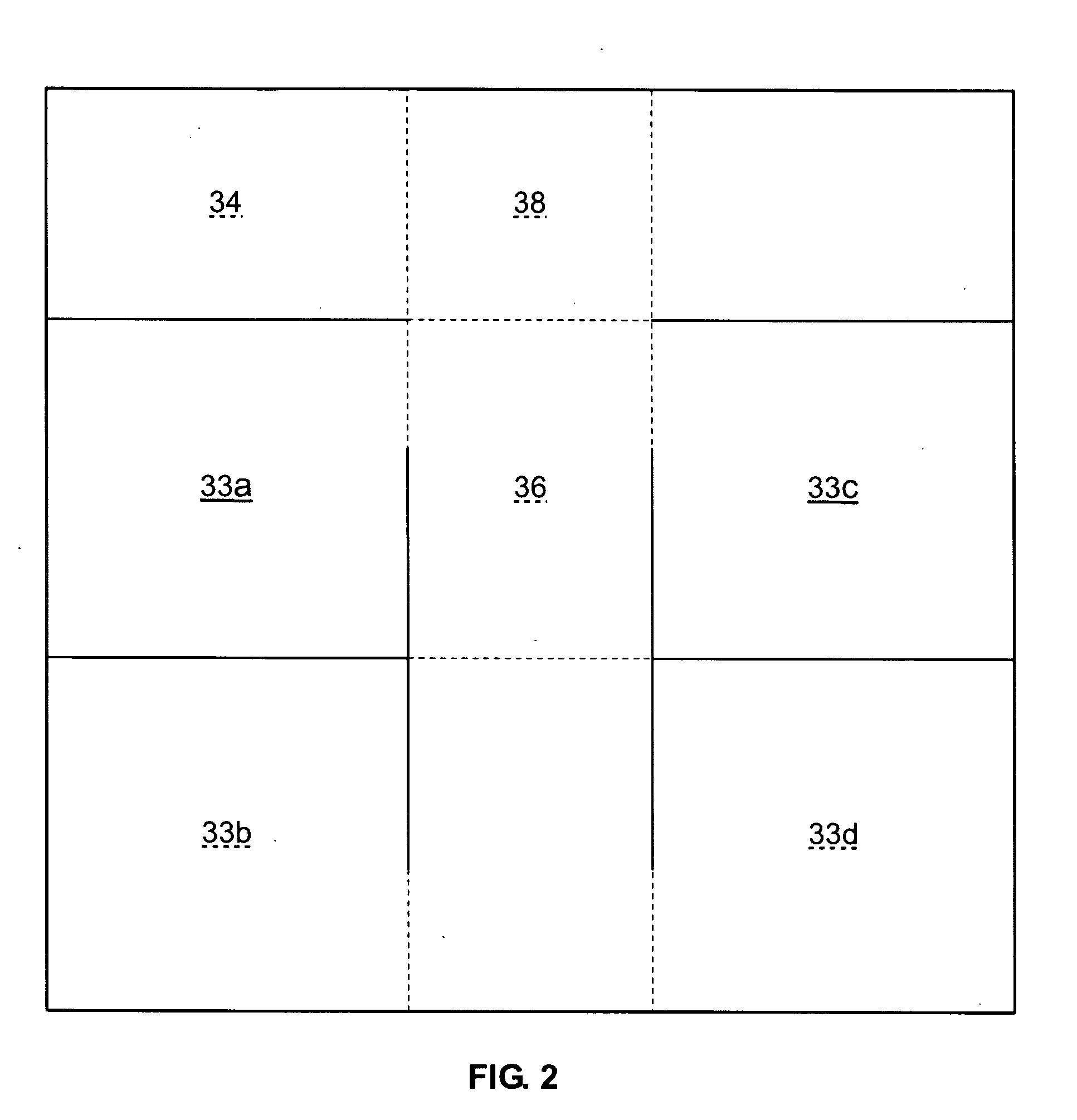Office building inefficiency factor and space planning circulation factor calculation system and method
a circulation factor and office building technology, applied in the field of system and method for calculating circulation factor and inefficiency factor for office buildings, can solve the problem of adding building efficiency loss to pure space, and achieve the effect of building efficiency loss
- Summary
- Abstract
- Description
- Claims
- Application Information
AI Technical Summary
Benefits of technology
Problems solved by technology
Method used
Image
Examples
Embodiment Construction
[0023] The system and method of the present invention uses a two-phase process to determine the correct amount of space required for a tenant in a building. During the first phase, formulas are used to calculate circulation factors on a room-by-room basis in accordance with the office space requirements for the tenant. The circulation factors and office space requirements are then added to determine the “pure space” required by the tenant. The pure space is the amount of space required in a perfectly efficient environment—a perfect rectangle with no columns or inefficiencies of any kind. As a result, the system and method of the invention takes a set of given office space requirements (reception areas, offices, workstations, file areas, etc.), and projects how much circulation area is required (aisle ways, ingress, egress, etc.) to establish the ideal or pure space.
[0024] During the second phase, the pure space calculated during the first phase is multiplied by a “building ineffici...
PUM
 Login to View More
Login to View More Abstract
Description
Claims
Application Information
 Login to View More
Login to View More - R&D
- Intellectual Property
- Life Sciences
- Materials
- Tech Scout
- Unparalleled Data Quality
- Higher Quality Content
- 60% Fewer Hallucinations
Browse by: Latest US Patents, China's latest patents, Technical Efficacy Thesaurus, Application Domain, Technology Topic, Popular Technical Reports.
© 2025 PatSnap. All rights reserved.Legal|Privacy policy|Modern Slavery Act Transparency Statement|Sitemap|About US| Contact US: help@patsnap.com



